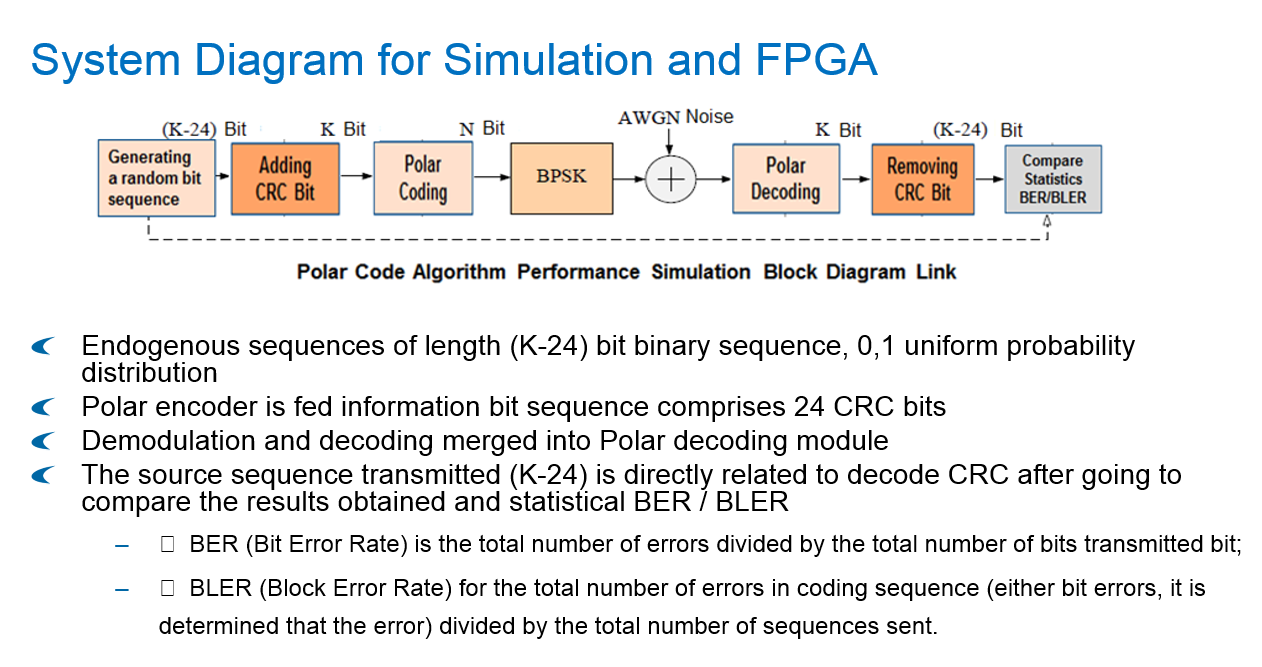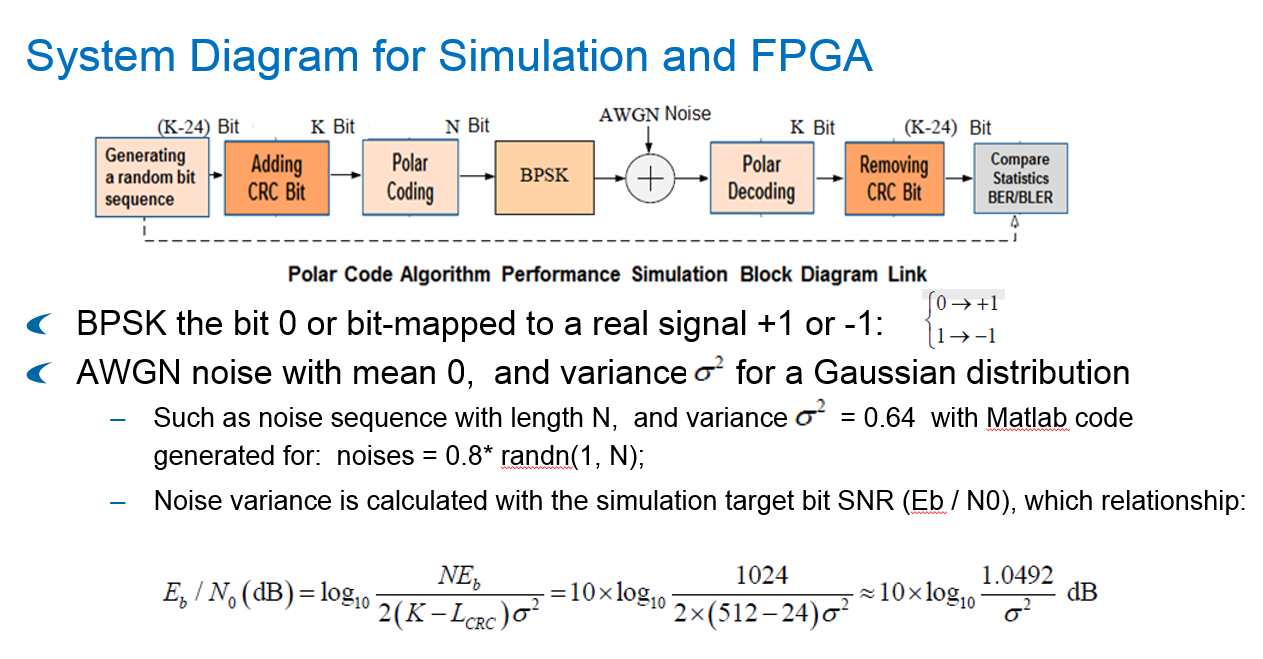Algorithm 3
Polar Code Encoding and Decoding

|
|
| One high-performance error correction code technology to meet the channel capacity limit. |
|
Since the emergence of the modern communications technology, in order to achieve a more reliable communication with to lower cost of (signal power, bandwidth, etc.), FEC has been the key area of the information technology. Channel coding technique is the basis of one of the core technologies of the physical layer of wireless communication system, its main purpose is to enable the digital signal can be reliably transmitted. Channel coding technique by adding additional parity bits based on the transmission information sequence, and at the receiving end using a certain coding technique to a higher probability of transmission errors generated in the process to correct, in order to achieve the correct transmission information sequence Receive. In order to achieve reliable signal transmission, coding experts proposed in the past half-century in a variety of techniques such as error-correcting code code (RS code), convolution codes, Turbo codes, and made in a variety of communication systems wide range of applications. However, all previous coding methods have failed to literally achieve the Shannon capacity. In 2008 International Conference on Information Theory ISIT, Arikan firstly proposed the concept of channel polarization, based on this theory, he gives the first known code, which can rigorously proved to reach the channel capacity and the code is named as pole codes (Polar code). Polar codes with a clear and simple encoding and decoding algorithms. Through continuous efforts to channel coding scholars, current Polar code error correction performance can be achieved over the widely used Turbo codes, LDPC codes. According to materials provided herein, and published references, understanding and decoding algorithms Polar code and design encryption procedures, performance simulation, output the correct simulation results. Code encoding and decoding algorithm based Polar, Polar code proposed FPGA logic implementation architecture, and using Verilog RTL hardware description language programming, using hardware and tools provided in this contest, conducted FPGA test, and outputs a corresponding test results. Figure1: System Diagram for Simulation and FPGA ( Click picture to enlarge )  Figure2: System Diagram for Simulation and FPGA ( Click picture to enlarge )  |
|
|
Requirements:
According to the game code provided by Polar introductory material and references, achieve Polar code codec algorithms, focusing on the development, validation and testing of Polar coding and decoding modules. Works format:
1. Understand Polar codec algorithm design Polar code encryption procedures, performance simulation, and output algorithm simulation results. 2. Based on the Polar code encoding and decoding algorithms, design of a Polar code FPGA logic implementation architecture, and using Verilog RTL hardware description language programming, using hardware and tools provided in this contest, conducted FPGA test, and outputs the corresponding test results. Delivery Material:
1. Polar codec algorithm programming code instructions, algorithms, programs (C, Matlab, etc.) and bit error rate (BER), block error rate (BLER) simulation results. 2. Polar code Compiler FPGA design specification, hardware description program, bit file and test results. Winner Selection Criteria:
First Round
1. Polar code encoding and decoding algorithm properly understood, correctly written Matlab / C algorithm to output the correct procedures and simulation results. 2. Submit Polar codes and decoding algorithms link FPGA design architecture. Second Round
1. Successful completion of Polar code encoding and decoding algorithms link FPGA development and testing. 2. FPGA implemented algorithm design, data throughput, processing delays and FPGA chip resource use. |
|
| Reference Material | |
|
1. 1st 5G Algorithm Innovation Competition-ENV1.0 - PolarCode  |
|
